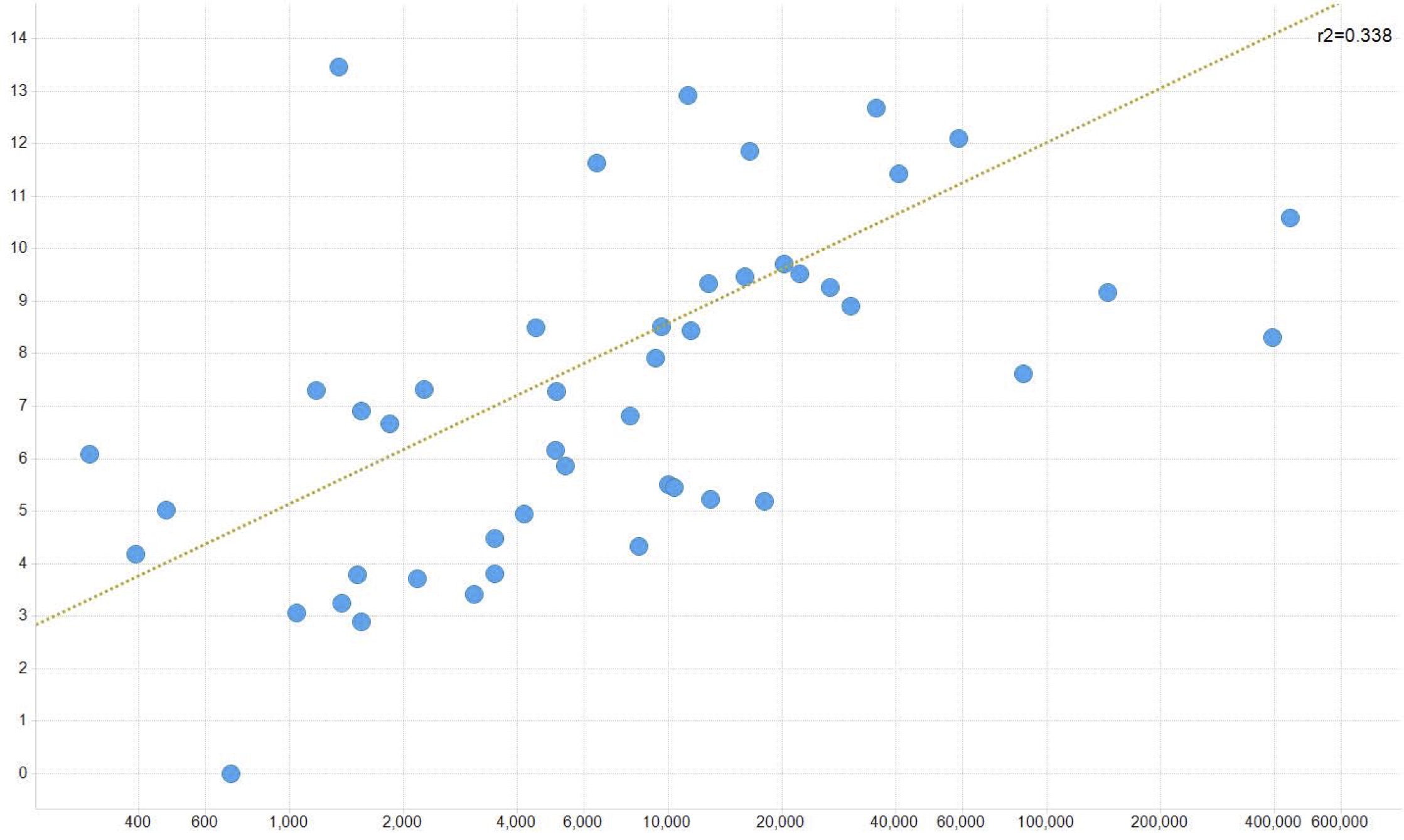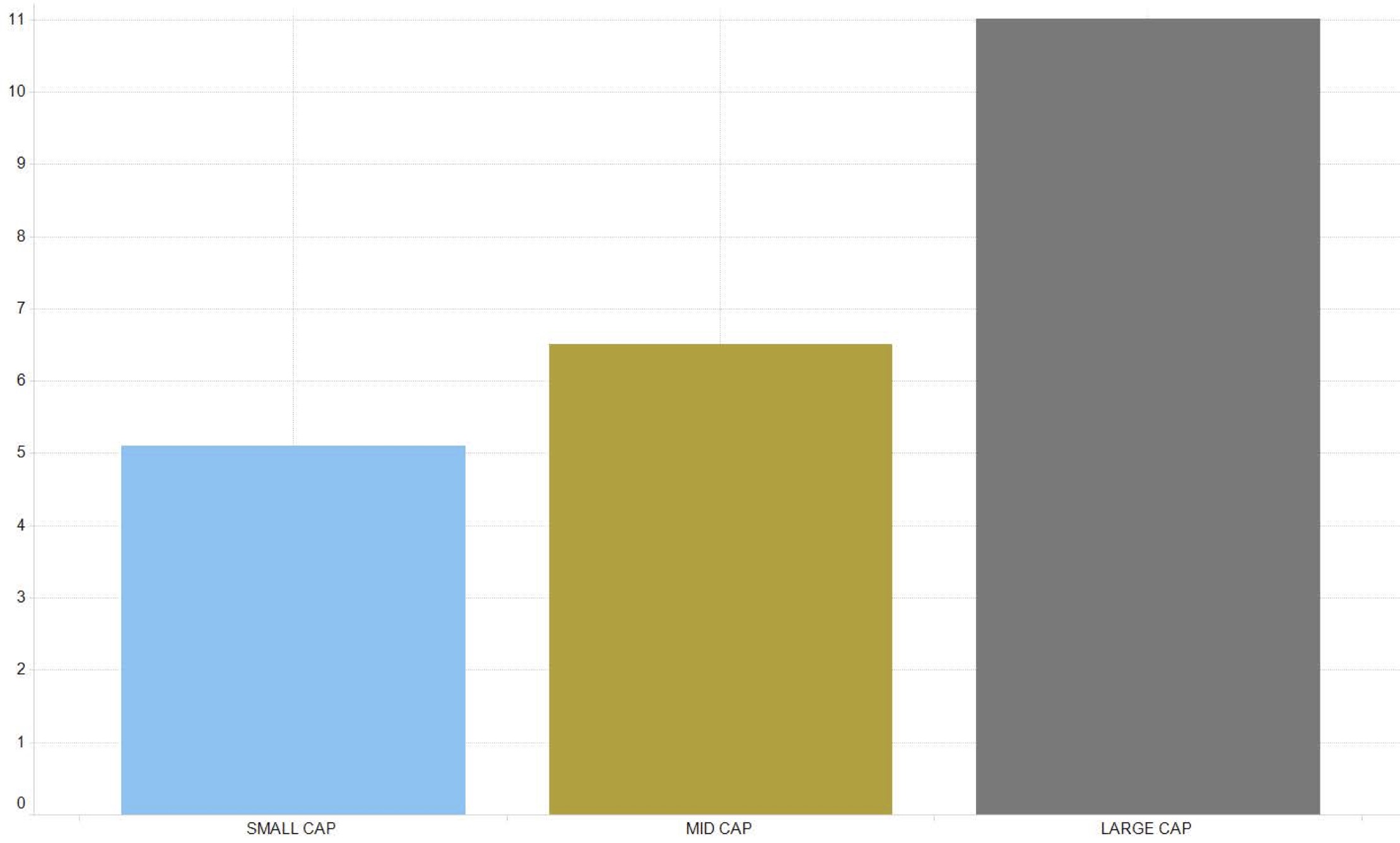
Although this quick look doesn’t tell the whole story, it stands to reason that the market’s attraction to larger E&P companies may lead to additional consolidation in the upstream space. (Source: Hart Energy / Shutterstock.com)
Over the last couple of years at least, we’ve observed a consistent premium awarded to larger upstream companies. Now that many companies have reported their 2020 results, we thought we’d take a fresh look.
Our sample doesn’t include every upstream name, and there are unfortunately quite a few names that we’ve looked at previously that are no longer publicly traded. Some went through bankruptcy and are now private; others merged with another company. Our sample for this review includes 53 companies that have total enterprise value (TEV) between $300 million and $600 billion. For our purposes, we’ve defined “small cap” companies as those with TEV less than $500 million, “mid-cap” up to $10 billion, and “large-cap” as those with greater values.
The chart below compares 2020 EBITDA multiples (TEV/EBITDA) versus TEV; note that the x-axis is a log scale. We continue to see a meaningful relationship between EBITDA multiples and company size. We also note that the EBITDA multiples are higher than we’ve typically seen; we attribute this to low 2020 EBITDA values caused by the pandemic-related collapse in commodity prices. Companies are now valued on a price outlook that’s much better than last year’s outlook.


When we look at the average multiple for our three company sizes (above), the size premium becomes clearer.
Although this quick look doesn’t tell the whole story, it stands to reason that the market’s attraction to larger E&P companies may lead to additional consolidation in the upstream space, particularly where companies scale up from the mid-cap (less than $10 billion) to the large-cap size.
About the Author:
Steve Hendrickson is the president of Ralph E. Davis Associates, an Opportune LLP company. Hendrickson has over 30 years of professional leadership experience in the energy industry with a proven track record of adding value through acquisitions, development and operations. In addition, he possesses extensive knowledge of petroleum economics, energy finance, reserves reporting and data management, and has deep expertise in reservoir engineering, production engineering and technical evaluations. Hendrickson is a licensed professional engineer in the state of Texas and holds an M.S. in Finance from the University of Houston and a B.S. in Chemical Engineering from The University of Texas at Austin. He currently serves as a board member of the Society of Petroleum Evaluation Engineers and is a registered FINRA representative.
Recommended Reading
Validus to buy Citizen Energy in Deal Worth Over $2 billion, Sources Say
2024-09-26 - Citizen Energy, backed by private equity firm Warburg Pincus, started exploring a sale in recent months after Validus Energy offered to buy the company, the sources said.
Chesapeake, Southwestern to Form Expand Energy as $7.4B Deal Closes
2024-09-26 - Chesapeake Energy’s merger with Southwestern Energy is expected to close in the first week of October, with the combined company renamed Expand Energy Corp.
Vivakor to Acquire Endeavor Crude Transport Cos. for $120MM
2024-09-25 - Vivakor said it is buying Endeavor Crude and related companies, which have a series of long-term strategic partnerships with customers in the Permian Basin, Eagle Ford Shale and the STACK play.
Carnelian Backs Williston E&P Zavanna as Bakken M&A Heats Up
2024-09-24 - Carnelian Energy Capital Management LP invested in Zavanna LLC, a longtime producer in the North Dakota Bakken and Three Forks plays.
Trace Midstream Acquires LM Energy's Delaware Basin Natgas System
2024-08-06 - Trace Midstream Partners, backed by Quantum Capital Group, will acquire LM Energy Delaware, a portfolio company of Old Ironsides Energy, with gas gathering assets in Eddy and Lea counties, New Mexico.
Comments
Add new comment
This conversation is moderated according to Hart Energy community rules. Please read the rules before joining the discussion. If you’re experiencing any technical problems, please contact our customer care team.




